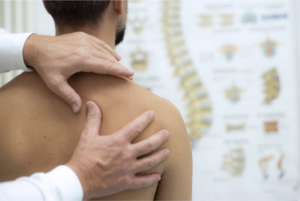Are chronic low back pain outcomes improved with co-management of concurrent depression?
Middleton P., Pollard H.
Chiropractic & Osteopathy 2005; 13: 8
Abstract
Objective: To discuss the role of depression in chronic lower back pain and comment on appropriate methods of screening and co-management.
Data Sources: The current scientific literature was investigated using the online web databases CINAHL, Medline/PUBMED, Proquest, Meditext and from manual library searches.
Data Extraction: Databases were searched from 1980 to the present (2005). Articles were searched with the key words “depression” and “low back pain”. Over three hundred articles were sourced and articles were then selected on their relevance to the chronic spinal pain states that present to manual therapy practitioners.
Data Synthesis: Pain is a subjective awareness of peripheral nociceptive stimulation, projected from the thalamus to the cerebral cortex with each individual’s pain experience being mediated by his or her psychological state. Thus a psychological component will often be associated with any painful experience. A number of studies suggest (among other things) that the incidence of depression predicts chronicity in lower back pain syndromes but that chronic lower back pain does not have the reciprocal action to predict depression.
Conclusions: The aetiology of chronic pain is multifactorial. There is sufficient evidence in the literature to demonstrate a requirement to draw treatment options from many sources in order to achieve a favorable pain relief outcome. The treatment should be multimodal, including mental and emotional support, counseling and herbal advice. While a strong correlation between depression and chronic low back pain can be demonstrated, an apparent paucity of literature that specifically addresses the patient response to chiropractic treatment and concurrent psychotherapy identifies the need for prospective studies of this nature to be undertaken. It is likely that multimodal/multidisciplinary treatment approaches should be encouraged to deal with these chronic lower back pain syndromes.

